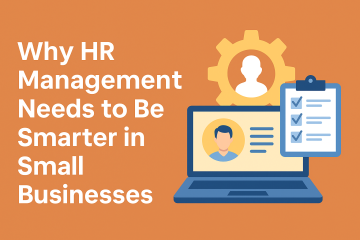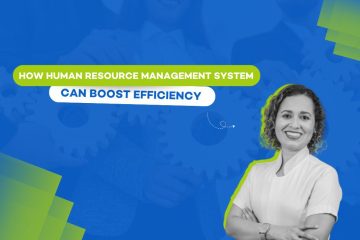As businesses increasingly rely on HR management software to handle sensitive employee data, robust security measures are crucial. Protecting this data is not just about compliance; it’s about safeguarding your company’s reputation and avoiding costly breaches. This blog covers the top 10 security tips to ensure the safety of your HR management software.
Understanding HR Data Security
HR management software streamlines operations but also introduces significant security challenges. Data breaches can have severe financial and legal consequences. According to recent reports, data breaches can cost companies millions and damage their reputation. This guide outlines essential security practices to protect your HR data effectively.
1. Implement Strong Password Policies
Passwords are your first line of defense. Ensure they are complex and regularly updated.
- Create Complex Passwords: Encourage the use of uppercase, lowercase, numbers, and special characters.
- Multi-Factor Authentication (MFA): Add an extra layer of security to prevent unauthorized access even if passwords are compromised.
- Regular Updates: Require regular password changes to enhance security.
Strong password policies help prevent unauthorized access and secure your HR management software.
2. Encrypt Data at Rest and in Transit
Encryption protects your data both while it is stored and during transfer.
- Data at Rest: Use encryption services to secure data stored in your HR management system.
- Data in Transit: Ensure data is encrypted using protocols such as TLS or SSL when being transferred.
- End-to-End Encryption: Implement end-to-end encryption to ensure comprehensive protection from creation to access.
Encrypting data ensures that even if it’s intercepted or accessed by unauthorized individuals, it remains unreadable.
3. Regularly Update and Patch Systems in HR Management Software
Keeping software updated is essential to mitigate vulnerabilities.
- Automated Patching: Use tools to automate the application of updates and patches.
- Vulnerability Scanning: Regularly scan for vulnerabilities and apply patches promptly.
- Patch Management Policies: Develop policies for timely updates to reduce risks.
Regular updates and patches close security gaps, protecting your HR management software from exploits.
4. Monitor and Log Activities
Continuous monitoring and logging are crucial for detecting and responding to security incidents.
- Activity Logs: Maintain logs of all user activities and system changes.
- Real-Time Monitoring: Set up alerts for unusual activities such as failed login attempts.
- Audit Trails: Regularly review logs to ensure no unauthorized access has occurred.
Effective monitoring and logging help maintain visibility and quickly address potential threats.
5. Implement Access Control Management
Restrict access based on job roles to protect sensitive data.
- Role-Based Access Control (RBAC): Ensure employees have access only to the data necessary for their roles.
- Principle of Least Privilege: Limit access to the minimum required for job functions.
- Regular Reviews: Periodically review and adjust access permissions as needed.
Proper access control reduces the risk of internal breaches and ensures data is only accessible to authorized users.
6. Regular Data Backups in HR Management Software
Backing up data is vital for recovery in case of loss or attack.
- Frequent Backups: Schedule regular backups of critical HR data.
- Secure Storage: Store backups securely, either physically or in a protected cloud environment.
- Disaster Recovery Plan: Develop and test a recovery plan to quickly restore data if needed.
Reliable backups and recovery plans ensure minimal downtime and data loss.
7. Educate and Train Employees
Human error is a major security risk. Training can mitigate this risk.
- Security Training: Provide regular training on recognizing phishing attempts and secure use of HR software.
- Simulations: Conduct phishing simulations to teach employees about potential threats.
- Ongoing Updates: Keep employees informed about new security threats and best practices.
Educating employees reduces the likelihood of mistakes leading to security breaches.
8. Use Secure Communication Channels
Always use secure methods for transmitting sensitive information.
- Encrypted Communication: Utilize encrypted messaging platforms and email services for transferring sensitive data.
- Avoid Unsecured Channels: Refrain from using regular email for transmitting confidential information.
Secure communication ensures that sensitive HR data remains private and protected.
9. Implement Anti-Malware Solutions
Protect your software from malicious threats.
- Anti-Malware Software: Deploy and regularly update anti-malware solutions to detect and prevent threats.
- Regular Scans: Perform routine scans to identify and address malware issues.
Anti-malware solutions help keep your HR management software free from malicious interference.
10. Secure Cloud Storage in HR Management Software
Ensure any cloud storage used for HR data is secure.
- Choose a Trusted Provider: Select a cloud provider with strong security protocols, including encryption and regular audits.
- Compliance: Ensure that your data storage complies with relevant data protection regulations.
Securing cloud storage ensures that your data is protected even when stored off-site.
Conclusion
Implementing these top 10 security tips will enhance the protection of your HR management software and data. As threats evolve, staying proactive with security measures is essential.
Ready to secure your HR management software? Contact DI Infotech, a leading IT software company in Delhi, for expert assistance in implementing these security best practices. Our team will help you ensure that your software is secure, reliable, and up-to-date.



0 Comments